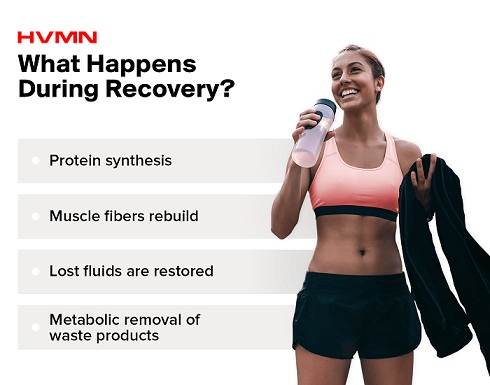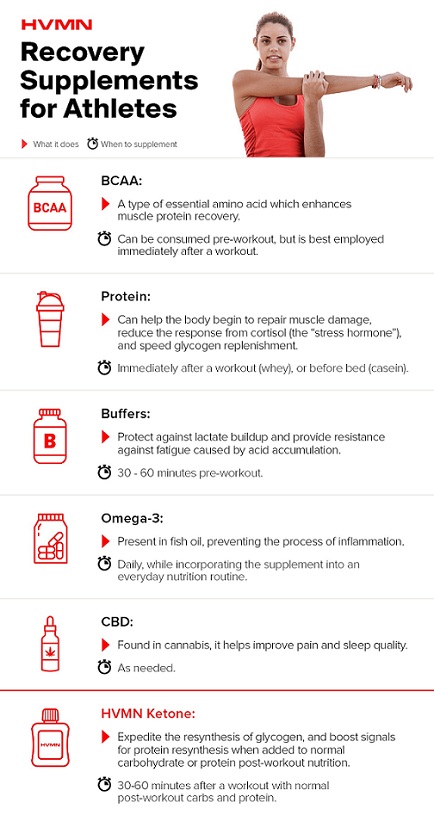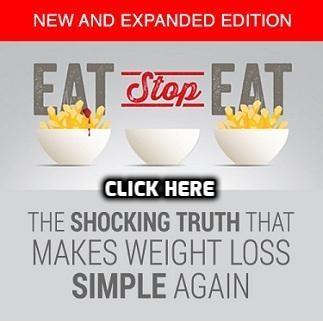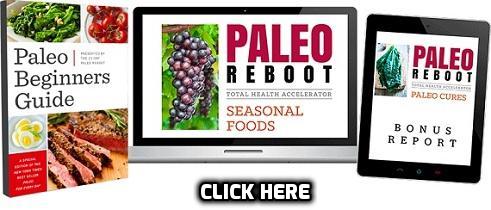Six Recovery Supplements for Athletes
Note: This article “Six Recovery Supplements for Athletes” is first published on HVMN. This article on our blog is a part of Editorial collaboration with HVMN.
Why is recovery so often skipped?
Athletes know it’s essential to build muscle. It’s crucial to cool down, eat protein, stretch, hydrate, and give your body an opportunity to replenish and repair post-workout.
Maybe it’s our busy schedules; we’re off to the next thing so fast, often unable to account for the extra half-hour of recovery after workouts. Maybe it’s because we don’t know the best way to recover; with so many muscles and so much information out there, it can be difficult to truly optimize recovery.
Maybe it’s a desire all athletes share; an innate need to be better, and a willingness to push ourselves until we get there. Any signs of slowdown feel instead like we’ve come to a complete stop.
For many athletes, it’s a combination. Still, we’re humans who share the same basic biology: muscle fibers that need rebuilding, glycogen stores that need repleting. While workout recovery supplements shouldn’t be solely relied upon, they can absolutely augment the recovery process.
Skipping Recovery is a Mistake
Recovery provides ample time to repair the muscle breakdown that happens with a regular workout. Post-workout recovery should be part of every training plan.
It’s a process that synthesizes protein, rebuilds muscle fibers, restores lost fluids and allows the body to metabolically remove waste products. While good old fashioned rest is absolutely important, supplements can be introduced to help make the most out of that down time and reduce muscle soreness.
To put the body in the best position to again break itself down with another workout, recovery is key to progress and even safety, as worn-down muscles are more likely to be injured. Recovery isn’t just important after things like overload training.
In order to benefit from even regular training, it’s necessary to first have a simple recovery process in mind and then add new methods (like supplements).
5 Days Fat Loss Accelerate – Get Result Every Time You Work Out
The foundations are things you’ve probably heard coaches and trainers lamenting for years.
Hydration is essential, as our muscles are 75% water. Maintaining fluid balance and can even improve endurance performance. Protein resynthesis also requires hydrated muscles.
Diet can also play a part. Since exercise triggers the breakdown of muscle protein, it’s beneficial to consume some amount of protein after a workout. Rebuilding and repairing muscles need amino acids to promote the development of new muscle tissue. Carbohydrates play a similarly important role in restoration, as they replenish glycogen stores depleted during workouts. But, no need to go too crazy: consuming even 0.5 – 0.7 grams of carbs per pound of body weight within 30 minutes of training can lead to adequate glycogen resynthesis.
Consumed together, protein and carbs can stimulate the insulin secretion that is a key signal to promoting glycogen synthesis.
Hydration and diet are the traditional ways to enhance recovery. However, these supplements can supercharge the process, helping put the body in the best position go harder during its next workout.

Recovery Supplements
There are two results when it comes to supplements: objective (measured through research) and subjective (experienced personally).
While some supplements are tried and true, validated with results over years of research, others are more cutting-edge, and still require additional research to provide conclusive results. You could try them out yourself and assess your experience.
It’s always better to do some thoughtful self-experimentation rather than relying wholly on sport science research, as many studies of supplements are conducted on trained athletes in their primes; it can be hard to conceptualize these results if you don’t fall into that category. It’s important to quantify the subjectivity of using supplements, looking at your own performance and feelings when employing them in training and recovery.
Science supporting supplement use is plentiful, but don’t discount the subjective, personal feeling because you’re the athlete actually experiencing them.
BCAA
Your muscles need protein to rebuild. The body breaks down protein into amino acids which are then transported throughout the body to be used in protein synthesis for other muscles; branched-chain amino acids (BCAAs) are the building blocks to maintaining muscle mass.
BCAAs are a type of essential amino acid, meaning the body can’t produce them itself–so it’s essential to obtain them through diet or supplementation. Studies incorporating BCAA to a post-workout meal broadly show enhancement of muscle protein recovery. Other studies in rats have showcased beneficial effects on protein synthesis, and a study in humans illustrated that BCAA supplementation alleviated skeletal muscle damage.
Review – Fat Loss Code – Is the Course of Shawn Stevensons Reliable?
Most BCAA supplements employ the three types of BCAA in some combination: leucine, isoleucine, and valine; however, leucine is often the highest-dosed of the three as it is the most widely implicated in muscle protein synthesis.
How to supplement: About 20g daily, split up in four or five servings
When to supplement: Can be consumed pre-workout, but is best employed immediately after a workout
HVMN Ketone
D-BHB, the ketone body present in HVMN Ketone, acts as an anti-inflammatory recovery tool, which helps reduce exercise-induced oxidative stress from the buildup of free radicals.11 These can cause damage to the cells. BHB can also help to reduce inflammation by decreasing the activation of a pro-inflammatory part of the immune system called the NLRP3 inflammasome.
BHB can help to decrease the impact of exercise on the body: studies of athletes using HVMN Ketone before a workout have seen a decrease in the breakdown of intramuscular glycogen and protein during exercise when compared to carbs alone.
HVMN Ketone also expedited the resynthesis of glycogen by 60%, and boosted signals for protein resynthesis by 2x when added to normal carbohydrate or protein post-workout nutrition.
These benefits help put the muscles in a position to recover effectively, enabling them to replenish the necessary energy stores for your next workout.
How to supplement: 25ml of HVMN Ketone (one serving)
When to supplement: 30-60 minutes after a workout with normal post-workout carbs and protein
Click here to Read: Review – Turbulence Training – Fake of Legit
Protein
More generic protein supplements, protein powders, or protein rich foods, often contain ample amounts of the more popular components: BCAAs, EAAs and leucine. Before splurging on a fancy BCAA supplement, consider increasing your protein intake to achieve muscle building, and supplementing as part of a powerful recovery stack. Learn more about ways runners can supplement recovery.
In the first few post-workout hours, consuming protein can help the body begin to repair muscle damage, reduce the response from cortisol (the “stress hormone”), and speed glycogen replenishment (especially if you aren’t able to consume the optimal amount of carbohydrate).16 After a workout, increasing the availability of protein in the body accelerates the resolution of muscle inflammation and promotes muscle-building. Whole foods like chicken, milk, eggs, yogurt and beans can provide necessary protein, while supplementation further introduces protein into the body, making it readily available for use.
There are a few different options athletes can take with regards to protein.
Whey is the most popular protein for workout recovery; the body absorbs it the fastest, and many consider it the most effective for muscle protein synthesis. Consider using whey as soon as you finish your workout.
Casein is more beneficial for long-term recovery because of the time it takes the body to absorb it. Casein protein releases amino acids that slow the digestive process; a study showed that consuming it before bed led to a 34% reduction in protein breakdown. This makes it ideal to take before sleeping, as it slowly releases amino acids to keep your muscles fed overnight.
You may be asking why we didn’t include soy-based proteins here. Though they’re an option for vegetarian or vegan athletes, science indicates they’re less effective than milk-based proteins.
Protein rich foods can also be a source of creatine, which is an organic acid best known for its positive effect on explosive strength performance. But it could help you with recovery too. For example, one study showed creatine supplementation reduced fatigue in swimmers and another study showed creatine helped speed up glycogen re-synthesis.
Together, whey and casein protein supplements can be incorporated daily to tackle different aspects of recovery and encourage muscle growth and rebuilding after a workout.
That said, many whole foods are just as good (if not better) in terms of protein content–but they’re less convenient and tasty than a protein shake.
How to supplement: For serious athletes, one gram per pound of body weight is sufficient; for non-serious athletes, about 0.5 – 0.75 grams.
When to supplement: Immediately after a workout (whey), or before bed (casein)
Buffers
The process of recovery can start even before your workout ends; some supplements, taken before or during exercise, can reduce the damage exercises cause the body, making it easier to go again.
We’ve previously discussed the role of lactate in exercise, and the resulting acidity (thanks, acidic hydrogen proton). During periods of intense exercise, lactate accumulates in the blood, making it acidic–this acidity is often associated with fatigue, because when our blood is too acidic, our brains send signals to make our muscles stop working so we can recycle all that extra lactate.
Buffers are meant to protect against lactate buildup and provide resistance against fatigue caused by acid accumulation. Two of the most popular are Beta-Alanine and sodium bicarbonate.
Beta-Alanine is an amino acid, but different than BCAA; it’s not used in protein synthesis but is instead converted into carnosine, which helps reduce lactic acid accumulation in the muscles, leading to improved athletic performance and reduced fatigue.
Click Here To Read:- 10 Things You Should Never Do Before Sleeping
By reducing lactate accumulation (and thus the stress of exercise on the body), Beta-Alanine can help make it easier for the body to recover by making that recovery time shorter.
Sodium bicarbonate (baking soda) also protects the body against acidity. By binding to the protons that cause acidity, sodium bicarbonate is able to reduce blood pH and potentially provide resistance against fatigue. Regarding recovery, sodium bicarbonate applies same principle as Beta-Alanine–less recovery time.
How to supplement: For Beta-Alanine, two and eight grams daily (split evenly throughout the day) depending on the person. For sodium bicarbonate, 200 – 300mg per pound of bodyweight.
When to supplement: Both should be taken 30 – 60 minutes pre-workout
Omega-3
Fish oil is a popular supplement used to obtain omega-3 fatty acids, with the goal of preventing the process of inflammation.25 Inflammation refers to a spectrum of processes that can affect healthy people (such as athletes), as well as those who are less healthy (such as heart disease patients or people with joint pain).
The two main fatty acids in omega-3 fish oils are docosahexaenoic acid (DHA) and eicosapentaenoic acid (EPA), which are broken down into signalling molecules called eicosanoids that can block inflammation pathways in the cell.
For athletes, acute, low-level inflammation can actually be beneficial for performance because it encourages healthy adaption. However, chronic, high levels of inflammation can be detrimental–so taking a sensible approach in deciding when to use anti-inflammatory supplements can be beneficial in the long run of an athlete’s career.
Inflammation happens throughout the body–not just in the muscles.
There are other body systems in which it can be helpful for athletes to reduce inflammation. For example, research suggested that fish oil supplementation helped decrease airway inflammation, and improve post-exercise lung function by 64%. This is important because during exercise, airways can narrow, restricting airflow–which can be detrimental, because oxygen is necessary for muscle function.
How to supplement: 250mg – 500mg daily
When to supplement: Best taken daily, with many incorporating the supplement into daily nutrition routines
Click Here to Read:- 10 Natural Home Remedies to Increase Stamina and Energy that actually works
CBD
The legalization of marijuana has made use of the ancient plan less taboo. Though many people are only beginning to understand its benefits, cannabis has quite a rich history of human use. It’s not yet a mainstream supplement, and is being researched as it becomes more widely available.
Cannabidiol (CBD) is one of the 104 chemical compounds known as cannabinoids found in cannabis. CBD is extracted from the cannabis plant and then diluted with a carrier oil. Its use for athletes is slowly becoming more widespread, as cannabis is explored and stigma dissipates.
CBD isn’t psychoactive–that’s tetrahydrocannabinol (THC), which is also found in cannabis and causes the psychoactive feelings often associated with marijuana. The absence of psychoactivity may be part of the reason for CBD’s increasing adoption as a natural pain relief alternative to pharmaceuticals.
For recovery, it has been used as a pain treatment for thousands of years.
Interestingly, the body has a system called the endocannabinoid system (ECS), which helps regulate several bodily functions from appetite to sleep to pain. The body produces these endocannabinoids, which are neurotransmitters that bind to cannabinoid receptors in the nervous system. Essentially, our bodies have a special way to process and use cannabinoids.
Studies on both rats and humans illustrate the benefits of CBD. Two studies (in rats) showed reduced pain response to surgical incision, and reduced sciatic nerve pain and inflammation. In humans (using a product called Sativex), studies in subjects with rheumatoid arthritis have shown CBD improved pain during movement and at rest, and improved sleep quality.
For delivery methods, the most popular is orally, through a dropper–but other methods include topical creams and through foods mixed with CBD oil.
How to supplement: 1mg is a standard serving size (about one dropper full), but depending on experience with CBD and size / weight, that dose can be increased or decreased
When to supplement: As needed
Recovery doesn’t stop after your workout.
We regularly discuss recovery techniques and best practices with our customers, ranging from ice baths to cutting-edge supplements. Stay tuned to learn more.

Building a Recovery Schedule
It’s necessary to budget recovery time into your training program. Read our detailed look at muscle recovery techniques and exercises to see what might work for you.
The timing of recovery in relation to exercise is also important, as each supplement and technique should be optimized for best results.
Before a workout (most important when if you are in a heavy training block or have important races/sessions without much of a break): Incorporate pre-exercise supplements that might mitigate the damage caused by the exercise. Examples include nitrates, bicarbonate, HVMN Ketone, and BCAAs 30 minutes before exercise. Omega-3 can also be taken daily for best results.
After a workout: Fuel that includes a mix of carbohydrates (for glycogen resynthesis) and protein rich in BCAAs or leucine (for muscle repair) should be taken as soon as possible after exercise. CBD oil can also be used as necessary, with no required timeframe. Active recovery can also be employed here, including things like foam rolling, stretching, a cool down period (like walking or slowly cycling), and ice baths (although the placebo effect is likely a big contributor to any benefit here).
Click Here To Read: 15 Ways To Quit Smoking Forever
One aspect of recovery that’s too often overlooked is rest.
While this isn’t a supplement, sleep and rest days are necessary for muscles to recover. Lack of sleep can lead to muscle degradation, but many don’t get the ideal seven-to-nine hours nightly. Yawn, by HVMN, is a natural sleep aid with melatonin that decreases the time it takes to fall asleep while improving the efficiency of sleep.
Sleep quality can be optimized by creating an ideal environment for sleep. Screens can have a negative impact here, so 60 – 90 minutes of screenless time before bed is important to combatting the blue light from screens that can decrease our natural melatonin. Blackout curtains and a cooler temperature in the bedroom can encourage restful sleep.
Similarly, recovery days are important to ensuring muscles have adequate time to replenish depleted energy stores, fluid loss and repair damaged tissues.36 Between complete rest days, techniques for active recovery–like easy runs, yoga, cycling, or plyometrics–can increase blood flow and promote recovery.
Supplementing Recovery
These supplements can help optimize the recovery process, one that can begin before a workout (pre-hab), continues immediately post-workout and extends several hours after exercise. Without thoughtfully approaching recovery, you could be compromising those gains.
Things like protein and BCAA have been employed by athletes for decades, but it’s also worth investigating newer supplements like CBD to see if they’ll be beneficial for your workout (and recovery) goals.
The benefits of supplements are best explored on a personal basis, as each person will react and employ them differently. Regardless of approach, serious athletes know recovery should be taken seriously and implemented consistently for best results.
What’s your favorite recovery method? Let us know in the comments.




 <
<
